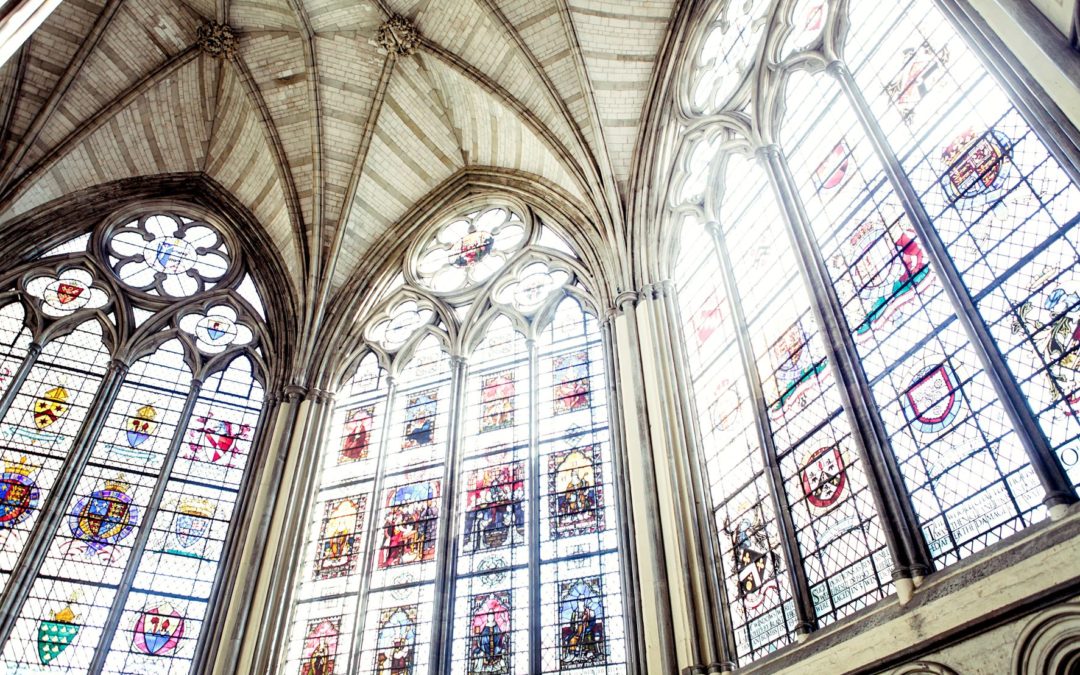We have an interesting tradition at our school. At our Back to School Assembly and at some point in our weekly Chapel services, someone will ask our students a series of catechism questions and the students will respond in unison. Here is a typical set of questions and answers that our students are familiar with.
“Students, who made you?”
“God.”
“What else did God make?”
“God made all things.”
“Why did God make you and all things?”
“For His own glory.”
“How can you glorify God?”
“By loving Him and obeying what He commands.”
“Why ought you to glorify God?”
“Because He made me and He takes care of me.” (Catechism for Young Children)
In terms of traditions, the use of catechism is an old one. It certainly predates our school because using catechism as a part of instruction goes all the way back to the New Testament church. Some say that Jesus laid the foundation of the use of catechism at Caesarea Philippi when He asked His disciples, “Who do people say the Son of Man is?” (Matthew 16:13) He followed this question with “But what about you? Who do you say that I am?” (Matthew 16:15). Peter’s response, “You are the Messiah, the Son of the living God” (Matthew 16:16) was the correct answer. Some believe this established the precedent for testing one’s beliefs by question and answer (Lockerbie, 2007). The New Testament church followed the example of Jesus and used His question from Matthew 16:15. Respondents would answer by saying “Kyrios Iesous Christos” as the prescribed answer. This Greek sentence meant, “Jesus Christ is Lord” (Philippians 2:10-11; Lockerbie, 2007).
A catechism is a series of religious questions and answers published for the purpose of recitation by students (Osmer, 1997; Potgeiter, 2013). Catechisms were used in religious instruction that included teaching and transformation while addressing morals and religious practices. They were seen as “a manual of Christian doctrine, designed for a popular audience (Potgeiter, 2013, p. 2).”
The question was called by a catechist (typically a minister or teacher), and the answers were recited by the learners, or catechumens (Potgeiter, 2013). The catechumens were adults new to the faith, or children. The catechetical process was intended to progress the catechumen beyond rote repetition into a deeper understanding of the faith, embedding the information into the life of the learner. Catechism served as standard answers to common questions of the faith. These questions and answers generally followed a similar pattern and addressed four main topics: the Apostle’s Creed, the Lord’s Prayer, the Ten Commandments, and the sacraments (Osmer, 1997; Potgeiter, 2013).
In the early years of the church, catechesis was used to train new adult converts in the tenets of the Christian faith (Kienel, 1998). Over time, to combat heretical interpretations and doctrinal differences, the single question and answer was expanded. These questions were used as a doctrinal confession before a candidate could be baptized (Kienel, 1998; Osmer, 1997). The expanded questions asked the catechumen if they believed in God the Father; in Jesus Christ, the Son of God; and in God the Holy Spirit. The questions had prescribed answers that affirmed the Father as Creator; the Incarnation, Atonement, and Resurrection of the Son; and the work of the Holy Spirit (Lockerbie, 2007).
Over time, catechism became a way of expressing orthodoxy within the Protestant faith and outlined the distinctives of Protestant theological beliefs (Osmer, 1997; Packer & Parrett, 2010, Potgeiter, 2013). Teaching from the catechism became a regular part of Lenten church services. Ministers offered special catechism classes to children. It became common for children to recite from the catechism at a special service through which the child was admitted to participate in the Lord’s Supper (Osmer, 1997). An established use of catechism provided a structure for the spiritual formation of children that dominated Protestant churches and schools from the Reformation to the 19th century. This structure involved infant baptism, followed by catechetical instruction, and then followed by admission to the Lord’s Table (Osmer, 1997).
The Catechisms of the Reformation borrowed from the instructional tradition of using a set of searching questions followed by answers. During the Reformation, the education of students included a strong focus on the classics. The Reformers drew from their assumptions about learning and the role of the teacher (Osmer, 1997). Education was centered on classic texts. These classics represented authoritative models for speech and good writing. It was intended that students would internalize these speech and writing models by practicing and imitating them. Recitation was an important part of this internalization and focused on memorization, not on creativity. Catechism was treated like one of these classic texts. Students were required to memorize the catechism, even though the books were widely printed and available (Osmer, 1997).
The most widely used catechisms included the Heidelberg Catechism (1563), the Westminster Shorter Catechism (1647), and the Common Book of Prayer (1662). Each was developed for a particular application and was intended to solve specific problems (Potgeiter, 2013). These catechisms promoted the application of Scripture. They pointed out a person’s sin and were intended to lead one to a sense of sorrow. They explained the process by which a person is reconciled through Christ. They gave an opportunity to demonstrate reconciliation with others and challenge injustices. The catechisms also gave a reason for being moral and for demonstrating gratitude (Ottati, 2014).
What role could catechism still play in Christian education today? Creeds or beliefs help students KNOW. Christian schools that are paying close attention to the spiritual formation of students are monitoring student growth in knowledge, character, and conduct—what some schools call “Head, Heart, and Hands.” Students need knowledge to grow in faith. They need to KNOW God’s story and their place in it. This knowledge provides their identity and shapes them on their journey. Students need to know how people like Abraham and Sarah, Moses, and David played important parts in God’s story even though they doubted and sinned. They need to see how the Psalms can help them talk to God. They also need to discover how the Gospels and the apostles’ letters can help them be the hands and feet of Jesus in their daily lives. And, most of all, they need to KNOW how Jesus’ birth, life, death, and resurrection give them life.
Students should have opportunities to respond to this growing knowledge with questions like: How do I know Jesus loves me? Why is Jesus important to me? Who is the Holy Spirit? How have I experienced Him in my life? What do I know and believe about God the Father, the Son, and the Holy Spirit? What do I believe about salvation, sin, faith, good works, baptism, heaven, hell, prayer? There are many ways to help students answer these questions, including catechism.
Is it time once again to encourage Christian education to return to the wisdom of building Christians the old-fashioned way, through the use of catechism? Is it time for a contemporary catechism to be written for modern-day application that advocates for Christian orthodoxy? It is worth considering the resurrection of the lost art of catechism so that Christian schools can prepare students in the confession of the Christian faith and demonstration of its orthodoxy.
References
Holy Bible, New International Version. (2011). Zondervan. (Original work published 1978)
Lockerbie, D. B. (2007) A passion for learning: A history of Christian thought on education (2nd ed.). Purposeful Design Publications.
Osmer, R. R. (1997). The case for catechism. Christian Century, 114(14), 408. https://ezproxy.liberty.edu/login?url=https://search.ebscohost.com/login.aspx?direct=true&db=rlh&AN=9705104996&site=ehost-live&scope=site
Ottati, D. F. (2014). Learning theological ethics through the Heidelberg Catechism. Acta Theologica, Suppl 20, 139-155. http://dx.doi.org/10.4314/actat.v20i1.10s
Packer, J. I. & Parrett, G. A. (2010). Grounded in the gospel: Building believers the old-fashioned way. Baker.
Potgieter, R. (2013). A confident call to faith: Rediscovering the relevance of Christian catechisms. In die Skriflig/In Luce Verbi, 47(2), Art. #686, 10 pages. http://dx.doi.org/10.4102/ids.v47i2.686




